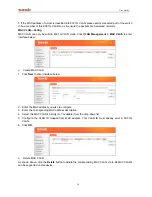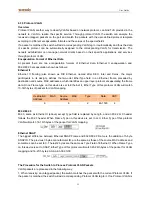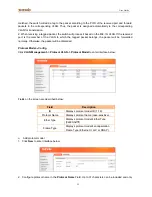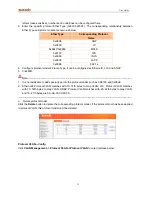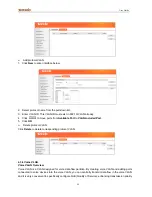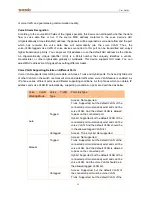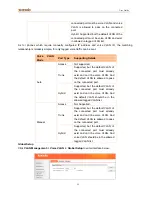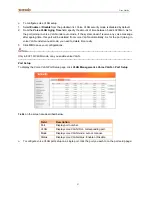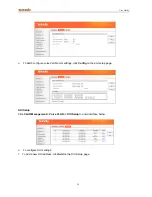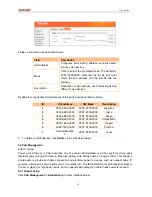
User Guide
122
4.6 Device Management
4.6.1 MAC
MAC Forwarding Table Overview
An Ethernet device uses a MAC address table for forwarding frames through unicast instead of broadcast.
This table describes from which port a MAC address (or host) can be reached. When forwarding a frame,
the device first looks up the MAC address of the frame in the MAC address table for a match. If the switch
does not find an entry, it broadcasts the frame. The MAC address table maintains a map of MAC
addresses and corresponding forwarding ports for fast frame forwarding. A MAC address table entry
includes the following information: destination MAC address, VLAN ID to which the port belongs and
forwarding egress port number. MAC address length is 6 bytes. The format is XXXX-XXXX-
XXXX and “X”
is hexadecimal.
When forwarding a frame, the device adopts the following forwarding modes based on the MAC address
table:
a) Unicast mode: If an entry is available for the destination MAC address, the device forwards the frame
out of the outgoing port indicated by the MAC address table entry.
b) Broadcast mode: If the device receives a frame with the destination address whose lowest bit of the
second byte is 1, or no entry is available for the destination MAC address, the device forwards the
frame to all ports except the receiving port, i.e. broadcast packets, multicast packets and unknown
unicast packets will be forwarded.
MAC Forwarding Table Aging Scheme
To adapt to network changes and prevent inactive entries from occupying limited table space, an aging
mechanism is adopted for dynamic MAC address entries. Each time a dynamic MAC address entry is
obtained or created, an aging timer starts. If the entry has not updated when the aging timer expires, the
device deletes the entry. If the entry has updated before the aging timer expires, the aging timer restarts.
This aging mechanism ensures that the MAC address table can quickly update to accommodate the latest
network changes. (To config MAC age, click
Administration -> System Info -> MAC Age
).
Note
-------------------------------------------------------------------------------------------------------------------------------
The MAC aging mechanism takes effect on dynamic MAC address entries only.
-------------------------------------------------------------------------------------------------------------------------------------------
Types of MAC address table entries
A MAC address table can contain the following types of MAC entries:
• Static MAC entries, also known as "Permanent Address", which are manually added and never age out.
For a small network with little change, static MAC address entry added manually may effectively reduce
broadcast traffic.
• Dynamic MAC entries, which can be manually added or dynamically learned and might age out.
Configure MAC address table entries
To display MAC address entries globally
Click
Device Management -> MAC -> MAC Address Display
to enter interface below:

